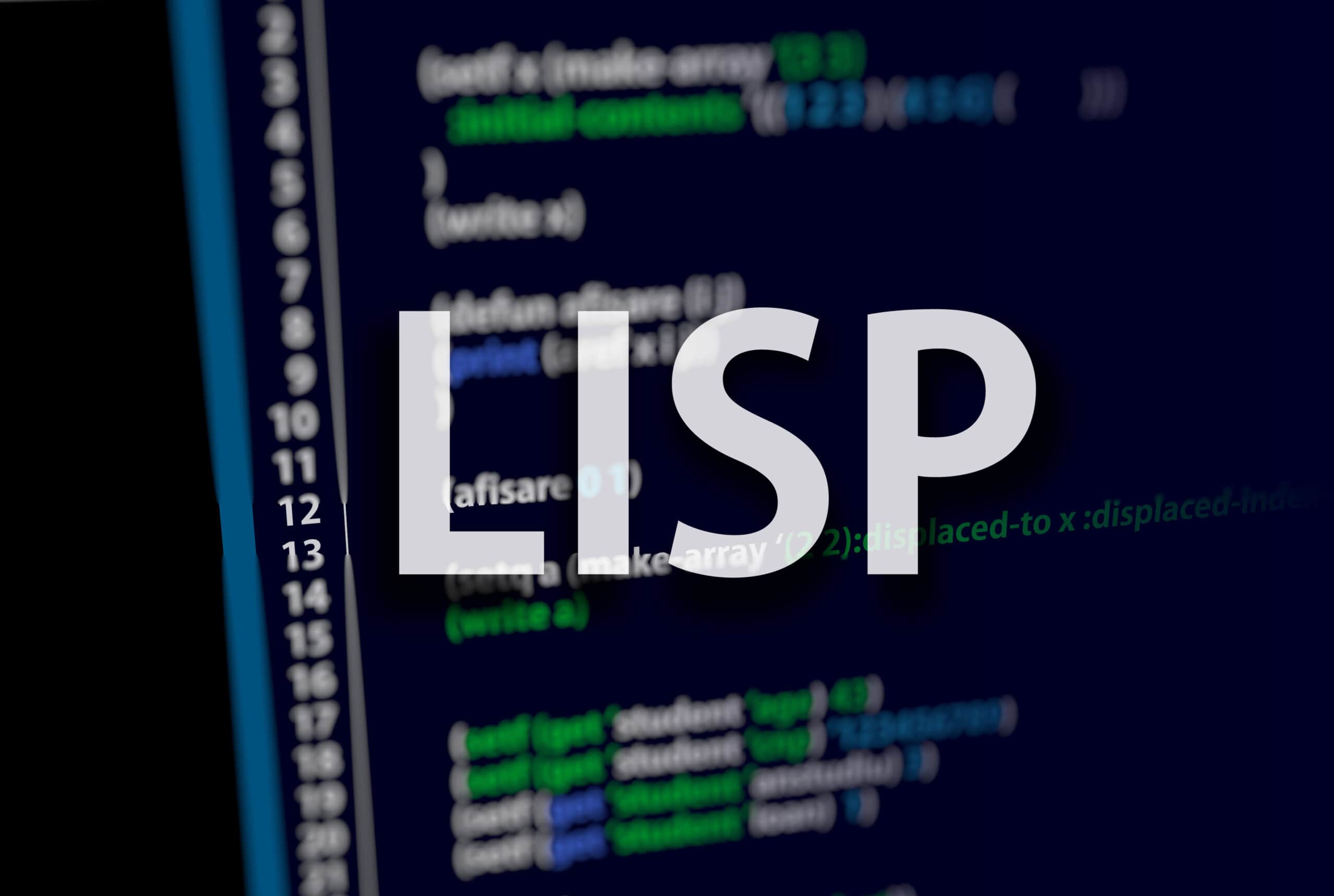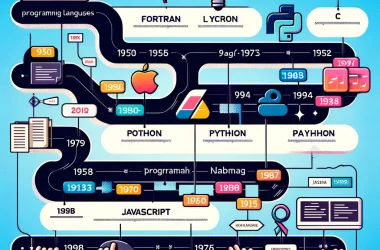Lisp: The Foundation Of Artificial Intelligence Programming

LISP (short for LISt Processor) was conceived in the 1950s with the primary purpose of automating symbolic computations. It was developed by John McCarthy at the Massachusetts Institute of Technology, with the goal of creating a programming language that could symbolically manipulate data, making it particularly suitable for use in Artificial Intelligence (AI).

Lisp’s Unique Features

Lisp’s distinctive features set it apart from other programming languages:
-
S-expressions: Lisp uses S-expressions (symbolic expressions) as its fundamental data structure. S-expressions are tree-like structures composed of lists, atoms, and symbols, enabling the representation of complex data in a natural and intuitive manner. This expressiveness makes Lisp especially conducive for manipulating symbolic information, a critical aspect in AI applications.
-
Parentheses: Lisp employs parentheses to define S-expressions. The structure of parentheses determines the meaning of the expression. This syntax, while initially perceived as unusual, offers a significant level of flexibility and extensibility that is particularly valuable in AI development.
-
Homoiconicity: Homoiconicity refers to a unique property of Lisp where the code and data share the same structure. In Lisp, the programs are also represented as S-expressions, allowing the manipulation of code as data and the generation of code dynamically at runtime. This flexibility proves instrumental in AI domains that involve symbolic reasoning and metaprogramming.
-
Garbage Collection: Lisp was one of the first programming languages to introduce garbage collection, a system that automatically deallocates memory no longer in use. This feature plays a crucial role in AI applications where managing dynamic memory allocation is often complex and prone to errors.
Impact on AI and Symbolic Programming
The introduction of Lisp had a profound impact on the field of AI. It became the preferred language for AI research due to its powerful symbolic processing capabilities and its affinity with human cognition. Lisp was employed extensively in early AI systems, including SHRDLU, a natural language processing program, and in the development of expert systems.
Lisp’s influence extended beyond AI research, influencing the discipline of symbolic programming, a paradigm that focuses on representing and manipulating symbols, rules, and logical relationships. Symbolic programming languages like Lisp continue to be employed in domains such as knowledge representation and reasoning, natural language processing, and expert systems.
Applications of Lisp Today
While Lisp has witnessed a decline in its widespread popularity as a general-purpose programming language, it remains an influential language in specific domains, including:
-
Artificial Intelligence: Lisp is still actively used in AI research, particularly in areas like symbolic reasoning, knowledge representation, and natural language processing.
-
Symbolic Mathematics: Lisp is a preferred choice for symbolic mathematical computations, such as computer algebra systems, where its S-expression-based data structures excel in representing mathematical expressions.
-
Computer Science Education: Due to its simplicity and its ability to elegantly express complex concepts, Lisp is frequently used as an introductory language in computer science courses, particularly in the context of teaching programming paradigms and data structures.
In conclusion, Lisp, with its unique features like S-expressions, homoiconicity, and its pioneering role in introducing automated memory management, laid the foundation for Artificial Intelligence programming. While it may have receded from its initial widespread popularity, Lisp endures as a powerful tool in specific domains, contributing to ongoing advancements in AI and symbolic programming.# Lisp: The Foundation Of Artificial Intelligence Programming
Executive Summary
Lisp, an iconic programming language renowned for its versatility, has laid the cornerstone for countless breakthroughs in the realm of Artificial Intelligence (AI). Its genesis, steeped in the profound insights of John McCarthy, propelled the advent of AI as a distinct field of study. This comprehensive exploration delves into the intricate relationship between Lisp and AI, unveiling the pivotal role that Lisp has played in shaping the landscape of intelligent systems.
Introduction
Conceptualized in the late 1950s, Lisp distinguishes itself with an elegant syntax that mirrors mathematical notation. This uncanny resemblance fosters a symbiotic relationship between Lisp and AI, enabling programmers to express complex concepts effortlessly. Over the past six decades, Lisp has served as the bedrock for pioneering AI advancements, from natural language processing to expert systems, heralding a new era of human-computer interaction.
**1. Lisp’s Expressive Syntax**
At the heart of Lisp’s success lies its expressive syntax, a testament to John McCarthy’s unwavering commitment to mathematical rigor. This intuitive syntax, akin to an algebraic formula, renders Lisp programs remarkably concise and readable. Its inherent elegance lends itself seamlessly to the intricate algorithms that underpin AI systems.
- Parentheses: Lisp’s ubiquitous parentheses serve as the scaffolding that structures code, fostering a unique aesthetic that sets it apart from other programming languages.
- S-Expressions: Lisp programs consist of S-expressions, versatile data structures that can represent code, data, and even functions, offering unmatched flexibility in program construction.
- Lambda Abstraction: A cornerstone of functional programming, lambda abstraction empowers Lisp programmers to define anonymous functions with ease. This capability proves invaluable in AI, where modeling complex relationships often hinges on defining concise, single-purpose functions.
- Recursion: Lisp’s inherent support for recursion, the art of invoking a function within its own definition, unlocks a potent mechanism for solving problems elegantly and efficiently. This technique forms the backbone of many AI algorithms, enabling the recursive exploration of complex search spaces.
2. List Processing and AI
Lisp’s unparalleled prowess in list processing has long cemented its position as the de facto language for AI applications. AI systems, grappling with vast volumes of structured data, rely heavily on efficient list manipulation capabilities to glean meaningful insights. Lisp delivers on this front, providing a comprehensive set of list processing primitives that endow programmers with the power to manipulate data structures swiftly and effectively.
- List Manipulation Primitives: Lisp’s extensive library of list manipulation primitives encompasses functions for constructing, traversing, and modifying lists with unparalleled ease.
- Data Structures: Lisp offers an array of built-in data structures, including lists, vectors, and hash tables, enabling programmers to model complex relationships between data items.
- Symbolic Processing: Lisp’s symbolic processing capabilities transcend mere numerical computations, allowing AI systems to manipulate symbolic expressions and reason about abstract concepts.
- Pattern Matching: Lisp’s pattern matching facilities empower AI systems to identify and extract meaningful patterns within complex data structures, a crucial capability for tasks such as natural language processing and knowledge representation.
3. Artificial Intelligence Applications
Lisp’s enduring influence on AI manifests itself in a vast array of groundbreaking applications, each harnessing the language’s unique strengths to push the boundaries of what computers can accomplish. Lisp’s elegance and flexibility have enabled researchers and practitioners to construct AI systems that exhibit remarkable capabilities, ranging from understanding human language to solving complex combinatorial problems.
- Natural Language Processing: Lisp’s list processing prowess makes it ideally suited for natural language processing tasks, enabling AI systems to understand and generate human language with increasing sophistication.
- Expert Systems: Lisp’s symbolic processing capabilities empower expert systems to capture and apply the knowledge of human experts, facilitating decision-making in a wide range of domains, from medical diagnosis to financial analysis.
- Game Playing: Lisp’s efficiency and expressiveness have propelled it to the forefront of game-playing AI, where programs like Deep Blue and AlphaGo have achieved superhuman levels of performance in chess and Go, respectively.
- Robotics: Lisp’s ability to model complex systems and reason about the physical world has paved the way for the development of intelligent robots capable of navigating dynamic environments, recognizing objects, and interacting with humans.
4. The Lisp Community
The Lisp community, a vibrant and dedicated group of programmers, researchers, and enthusiasts, has played a pivotal role in nurturing the language’s growth and evolution. This passionate community actively contributes to the development of Lisp implementations, libraries, and tools, ensuring that the language remains at the cutting edge of AI research and development.
- Open Source Implementations: The Lisp community boasts numerous open-source implementations, including Common Lisp, Scheme, and Racket, each catering to diverse programming needs and preferences.
- Libraries and Tools: A wealth of libraries and tools, meticulously crafted by the Lisp community, empower developers to harness the language’s capabilities effortlessly, accelerating the development of AI applications.
- Conferences and Workshops: The Lisp community fosters a spirit of collaboration and knowledge sharing through regular conferences, workshops, and online forums, facilitating the exchange of ideas and推动ing the advancement of Lisp-based AI research.
5. The Future of Lisp in AI
As AI continues its relentless march forward, Lisp remains poised to play a pivotal role in shaping the future of intelligent systems. Its inherent strengths in symbolic processing, list manipulation, and




Lisp is a really cool language. I’ve been using it for years to develop AI applications. It’s really powerful and flexible, and it’s great for representing complex data structures.
I don’t know, Lisp seems like a really weird language. I don’t think I could ever learn it.
Lisp is the best programming language ever invented. It’s so powerful and flexible, you can do anything with it.
Lisp is not the best programming language ever invented. There are many other languages that are better suited for different tasks.
Lisp is such a great language, it’s a shame that nobody uses it anymore.
Lisp is the perfect language for writing AI programs. It’s so easy to read and understand, even a child could learn it.
I once wrote a Lisp program that made me a sandwich. It was the best sandwich I’ve ever had.